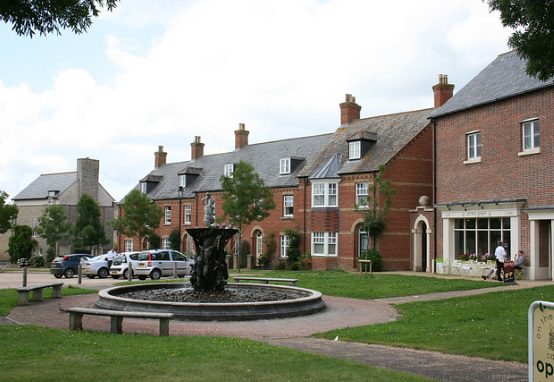Seeking a Return to Beauty

Championing the return of beauty to urban spaces is rooted in an ethos of affirmation, nourishing the citizen’s sense of place and belonging which underpins strong communities. Traditional architectural styles can inspire civic pride and symbolize civic values, unlike the monstrosities of glass and concrete which uglify today’s towns and cities.
There is a temptation to become fatalistic and resign ourselves to the inevitable destruction of the places we love. But that need not be the case. In Great Britain, there has already been some progress which could be emulated here in the United States.
An unlikely leading figure in the effort for reviving beauty in urban spaces is Prince Charles, the future King of England. As long ago as 1984, Prince Charles delivered a provocative speech to the Royal Institute of British Architects which criticized the architectural styles of the post-war era. He elegantly described a prewar London where an
affinity between buildings and the earth, in spite of the City’s immense size, was so close and organic that the houses looked almost as though they had grown out of the earth and had not been imposed upon it—grown moreover, in such a way that as few trees as possible were thrust out of the way.
Later in 1989, Charles published a book, A Vision of Britain: A Personal View of Architecture, following his wonderful BBC documentary the previous year, which reinforced his critique of modern architecture. You can watch a clip here.
Charles has not been merely content to voice his concerns. He has put his words into action through The Prince’s Foundation for Building Community. Its most significant achievement has been Poundbury, an urban extension of Dorchester in Dorset, England, where traditional urban styles have been adopted.
The development began in 1988 under the supervision of Léon Krier, who went on to become a leading light of the New Urbanism movement. Krier decided to prioritize people before automobiles, and mix commercial and residential buildings together, thus producing an attractive urban environment where people could develop a sense of place.
The practical benefits are clear as the development has allowed Dorchester’s population to grow by 25 percent, reconciled high population density with good living standards, and invested in sustainable urban development, such as 11 “Eco Homes.” Over the years Charles has made an invaluable contribution to the renewal of beauty in urban spaces, and resisted the rising tide of vulgarity and ugliness.
Another important crusader for beauty in urban spaces is the Scottish sculptor Alexander Stoddart, who has focused on reviving the neoclassical tradition. His two most notable works are the bronze statues of Adam Smith (2008) and David Hume (1997) on Edinburgh’s Royal Mile:

One can see Stoddart’s beautiful craftsmanship shine through alongside a clear sense of civic pride, thus giving a meaning to these statues that simply cannot be found in the abstract and postmodern novelties that litter our cities today.
The subject matter Stoddart focuses on is equally important. Instead of sculpting the “footballers” and pop artists who define Britain’s vapid celebrity culture, Stoddart depicts the philosophers who helped make Scotland’s essential contribution to the development of Western Civilization. The result is public spaces with a sense of affirmation and value, instead of cynicism and meaninglessness.
Beauty is based upon an ethos of affirmation. It makes people’s sense of place and belonging tangible which is essential to the flourishing of individuals and communities. By putting beauty at the heart of urban planning and turning back the tide of vulgarity and ugliness, there is hope that we can create urban spaces which reaffirm our collective identity instead of rejecting our past.
David A. Cowan is an editorial assistant at The American Conservative. New Urbs is supported by a grant from the Richard H. Driehaus Foundation.
Comments